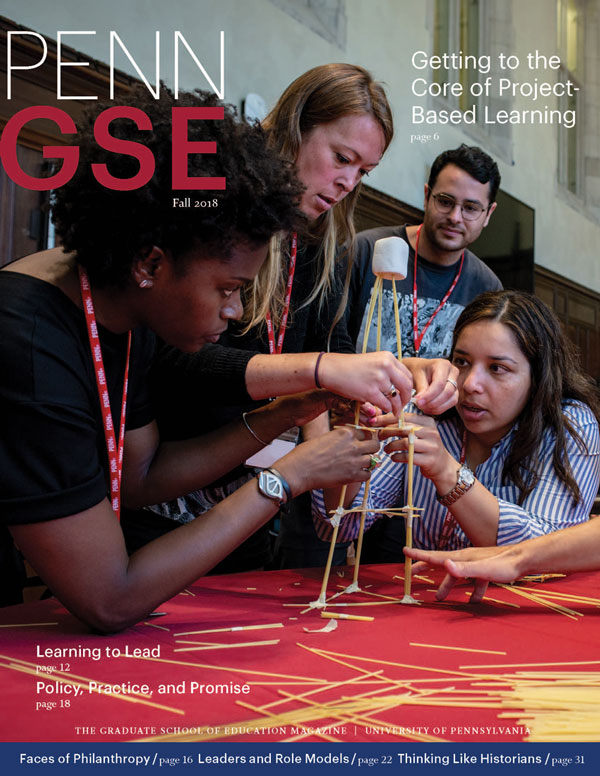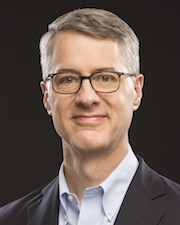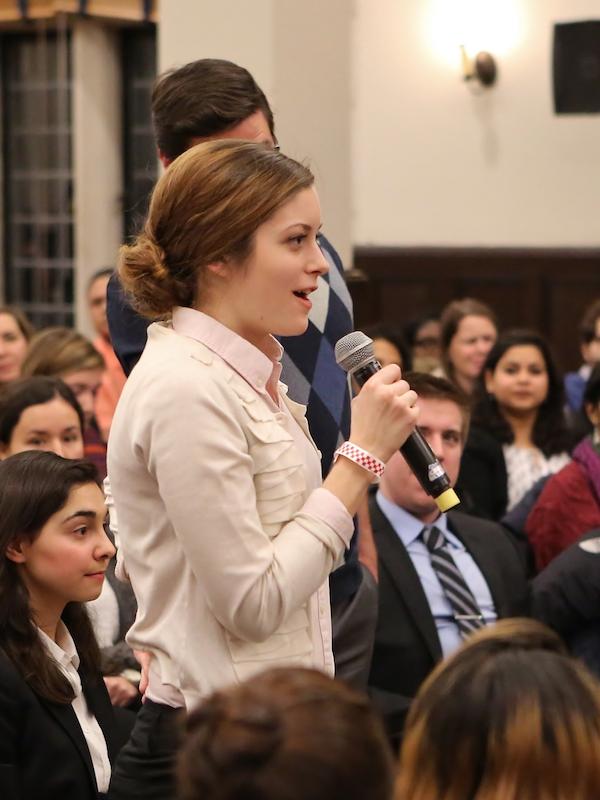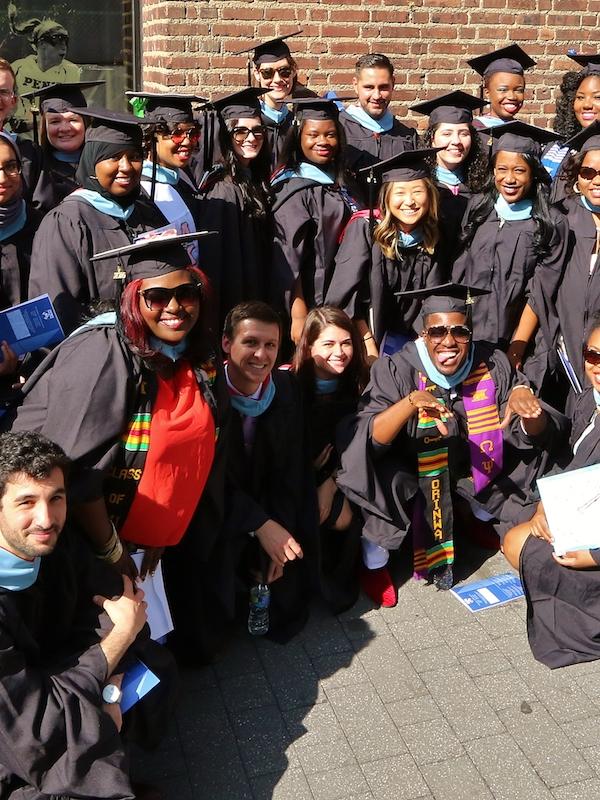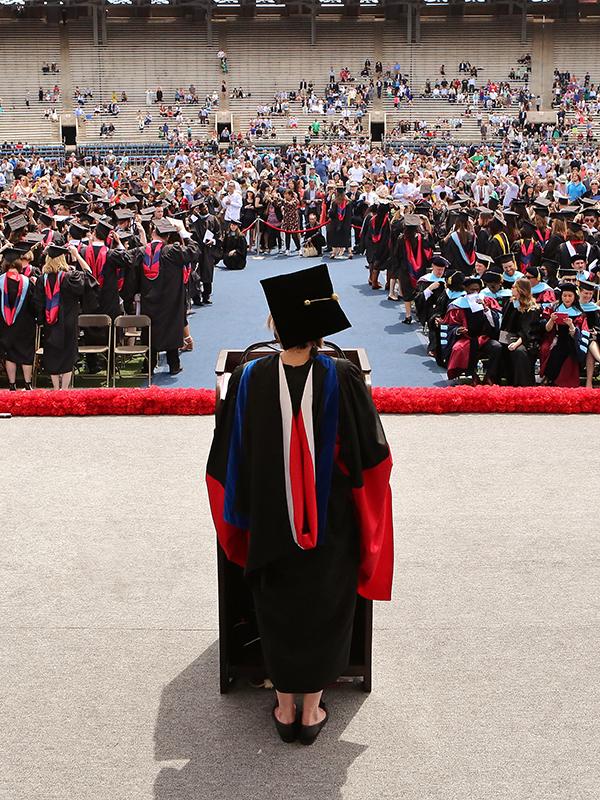Leaders and Role Models: Educators Grow Through Penn GSE’s Mid-Career Doctoral Program in Educational Leadership
by Jen Miller
For teachers and administrators seeking to take on new challenges in education, the best way forward is often through an advanced degree. This can mean uprooting their lives and leaving their students behind in order to garner knowledge that will make them better leaders. Penn GSE’s Mid-Career Doctoral Program in Educational Leadership offers a different option.
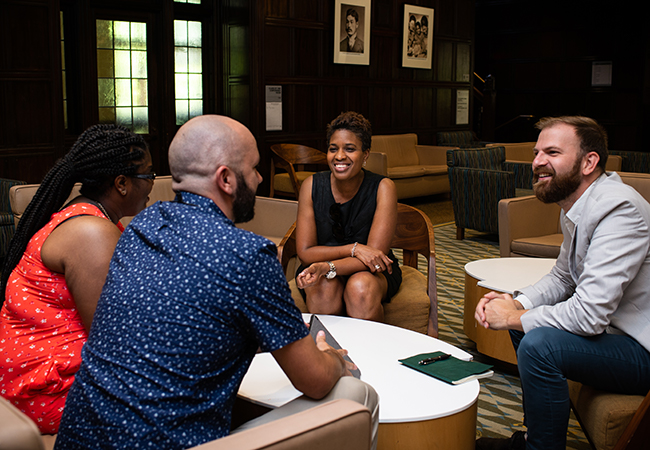
“We serve passionate, talented educators who want to stay in practice while earning their degree, so that they don’t have to leave their positions to pursue a traditional program,” says Penn GSE Senior Fellow Michael C. Johanek, director of the program. “We see it as an advantage that they can integrate what they learn into their day job.”
A cohort of twenty-five students enters the program each year. Over the course of three years, each cohort comes to campus for an intensive weekend session nearly every month, and for a full week each July. In between sessions, students undertake coursework and participate in online discussions while continuing their full-time jobs. “They learn to think differently about their work and gain the potential to take on new roles that amplify their leadership,” says Dr. Johanek.
Current Mid-Career students Jennifer C. Stimpson and John LePelley have brought new insights from the program to their schools as they develop their leadership skills and strive to be strong role models for their students.
“On a trampoline you jump up and down. I felt like I’d reached a point where I was jumping in my career, but the Mid-Career program would be the launch pad I needed to move forward,” says Stimpson, who has been a teacher for nearly twenty years. Once a chemist for the U.S. Drug Enforcement Administration, Stimpson realized she had a knack for teaching when she volunteered in a public school in Dallas, Texas. Today she is a science teacher at The Hockaday School, a girls’ independent pre-K to 12 school in Dallas. She is also founder of jSTEMp Science, which runs science-themed camps for middle school students, particularly girls of color. Stimpson was named one of three winners of O magazine’s White House Leadership Project and one of ten Hidden Figures of Dallas: Top Women of Color in STEM by the National Society of Black Engineers.
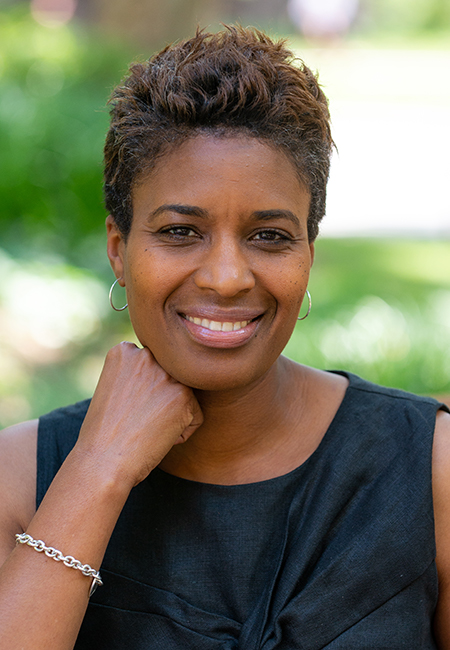
Now in her second year of the Mid-Career program, Stimpson considers it a defining moment in her career. “I have learned that effective leaders help others shift the way they see themselves. They motivate students, faculty, and staff to go beyond what is asked. I apply this understanding in my professional life,” she says. She hopes to serve as a positive role model for her students and encourage them to see themselves as capable individuals and future scientists. “I see it as my responsibility to help more girls, particularly girls of color and African American girls, face the field of science with confidence and preparedness,” says Stimpson, who also hopes to write books about the STEM experience for girls of color.
John LePelley, a member of the same Mid- Career cohort as Stimpson, was intrigued by the prospect of a rigorous doctoral program that didn’t force him to leave his full-time position. LePelley is head of school at Cleveland School of the Arts, an urban public school in Ohio where students can focus their studies on music, dance, theater, writing, or the visual arts while preparing for college. An artist with an MBA, LePelley has spent his career in urban education working with low-income students, first as a math teacher and later as an administrator. Prior to joining Cleveland School of the Arts, he was principal of another school in the Cleveland Metropolitan School District. Like Stimpson, he hopes to set an example for students.
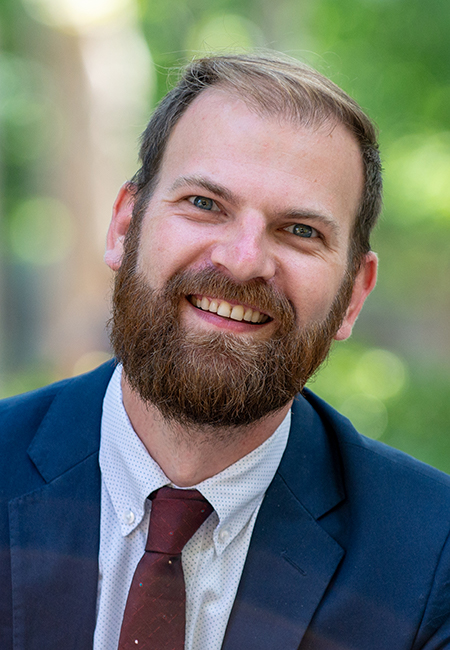
“As someone who grew up in a low-income household, and as a first-generation college graduate, I hope to inspire students from similar backgrounds,” he says. “It is also important to me that as an openly gay urban public school leader, I am serving as a role model for LGBTQ kids.”
Interested in a future position that would focus on coaching and mentoring school leaders, LePelley points to his classmates in the Mid- Career program as a significant source of learning. “We share the unique perspectives and skills that we bring to the table when working with kids to solve school challenges. It’s been important to me to bring what I’ve learned from my classmates back to my school community,” he says.
“As someone who grew up in a low-income household, and as a first-generation college graduate, I hope to inspire students from similar backgrounds.”
He also considers his classmates an extended family. “If we’re going through a challenge in our workplace, we call each other for advice on how to handle the situation,” he says, “and we’re in touch regularly, not only to share advice about our assignments, but also to check in on each other. If we know someone is sick, we send them get-well gifts, and we text each other on birthdays. We know when we’re in a classmate’s city, and we visit them while traveling.”
That sense of community continues after students graduate, according to Johanek. “We aren’t just conducting a three-year program—we’re building a long-term network of alumni who share a commitment to educational leadership and to one another,” he says.
This article originally appeared in the Fall 2018 issue of The Penn GSE Magazine.

